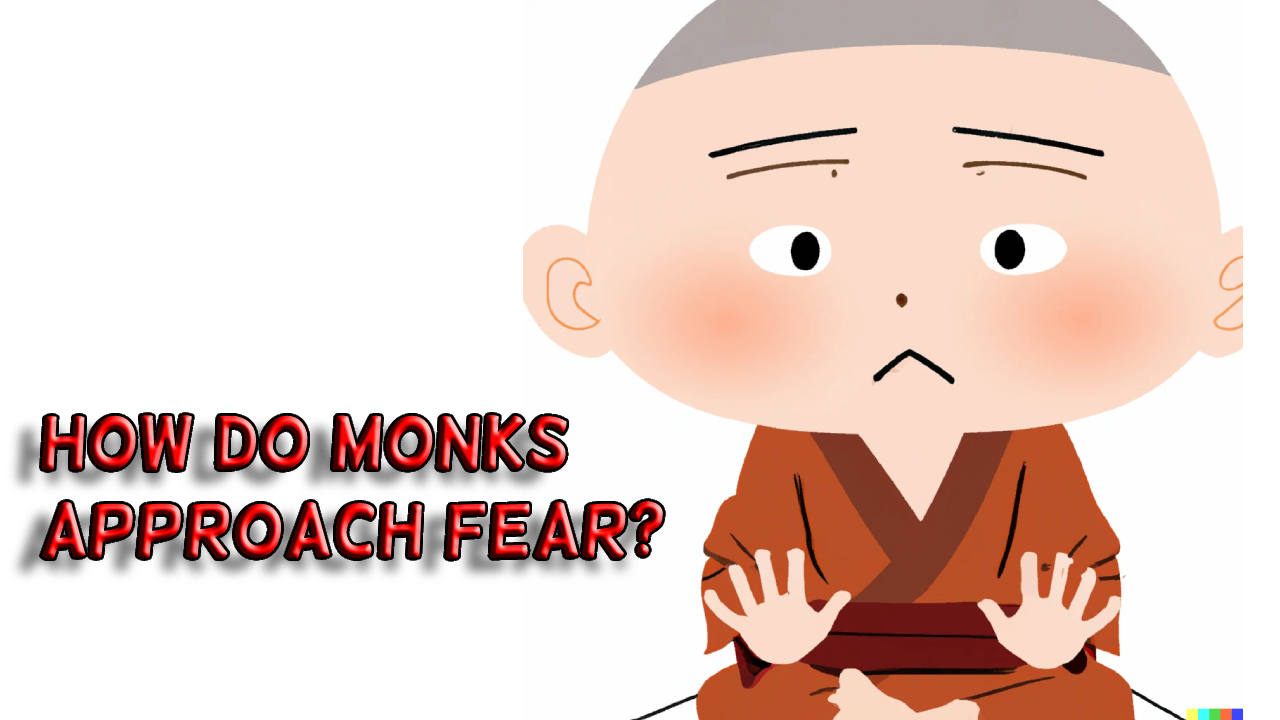How do monks approach fear?
Tips for dealing with fears from the book "Think like a monk" by Jay Shetty.

We all have fears. They can be about money, job, or relationships. In the book I am reading titled “Think like a monk”, Jay Shetty (a former monk) describes how monks deal with fears. Let’s find out.
We will never live entirely without fear. Even monks have fears. They just can deal with it better than most of us. Jay says that fears are not a bad thing. They serve a purpose. They are like warning flags. Our mind is trying to say that something is not right. It is up to us what to do with that warning.
Finding fears
To be able to deal with fears, monks first try to find their fears. One major issue related to fear is that our brains try to escape them. They deny the fears. We will see that this is not a good way to deal with fears. So first, we need to recognize our fears to deal with them.
Let’s see an example. Jay shares how he found his fears. In an exercise with the other monks, they were asked to describe their fears. Initially, Jay didn’t have any fears. Then he kept asking himself: What am I afraid of? After a while, something came up: Exams. He was afraid of exams. Why? He started digging. He was afraid of low scores. Why? He was afraid of what his parents would think of him. Digging further, he realized that his parents had a bad marriage, and he was always trying to make them happy. He was mainly afraid that he would be unable to make them happy. That’s a root-level fear resulting in many surface-level fears. Without finding it, he would never be able to deal with it.
The key to finding those fears is to not let our brains dodge the question of what we are afraid of. Ask gently and consistently. Eventually, we will find our fears. Not just the surface-level fears but the deep-rooted fears that unconsciously change our behavior.
Typical reactions to fears
Fears often result in stress and anxiety. When our brains produce fear signals, our body is not able to categorize them well. Our body would react similarly when we experience falling from a real mountain or just a visualization through virtual reality. Jay points four reactions we have when we face fears:
- Panic
- Freeze
- Run away
- Bury it.
The first two are short-term fear responses. The other two are long-term fear responses. Panicking and freezing can be fixed through breathing exercises and practice. Here are some other things monks do to deal with fears.
Accept them
Fears are like a sign. The first thing we need to do is to acknowledge them. Realize that this is a signal our brain has sent so that we can process it properly. Then we can focus on what is under our control. Not all events are necessarily bad. Our brain finds them unusual, so it sends the fear signal. This signal demands our attention, and hence we must pay attention.
Prepare for them
One of the exercises suggested in the book is to rate our fears. First, think about the worst thing that can happen to us. Rate it, say, 10. Then rate the other fears relative to that one. This brings back our rational thinking from the abnormal state we dive into when facing fears.
Monks also realize that attachment causes fear. Fear of losing something. They practice detachment. They separate the identity from emotions. Instead of saying, “I am afraid”, we should say, “I feel afraid”. They think of everything as if they are borrowed. Their privileges, relationships, and even identity is borrowed. Let’s say we don’t own a good car and take a really expensive car on hourly or daily rent. In that case, we know the car is not ours, but we still enjoy riding it. In fact, we enjoy it more. Notice that this ‘detachment’ is not the same as ‘indifference’ where we simply don’t care what we are riding.
Long term fears
Dealing with long term fears is hard. I particularly liked the analogy of a fire alarm presented in the book. If a fire alarm goes off in the middle of the night, what do we do? We gather our family and pets and get out of the house. There is another way to deal with the alarm. We can run to the fire alarm, take out the battery and go back to sleep. That’s equivalent to denying or burying the fear.
It should be clear that running away from fear is not helpful. It doesn’t solve the problem. Fear is just the signal. If we don’t pay attention to it, the real problem won’t be solved. It will follow us and perhaps get bigger. Eventually, we will be forced to take action.
In conclusion, fear is a natural response to uncertain situations and experiences in our lives. However, how we deal with our fears can make a significant difference in our lives. Monks, through their practices and teachings, have shown us that accepting our fears, recognizing their root causes, and preparing for them can help us face them with a clear mind and overcome them. By understanding our fears, we can avoid negative long-term effects on our mental and physical health and take control of our lives.
Just a reminder: If you like this blog, consider sharing it!
My favorites
Video: The birthday paradox (TedED)
Quote: “Fear does not prevent death. It prevents life.” — Buddha
